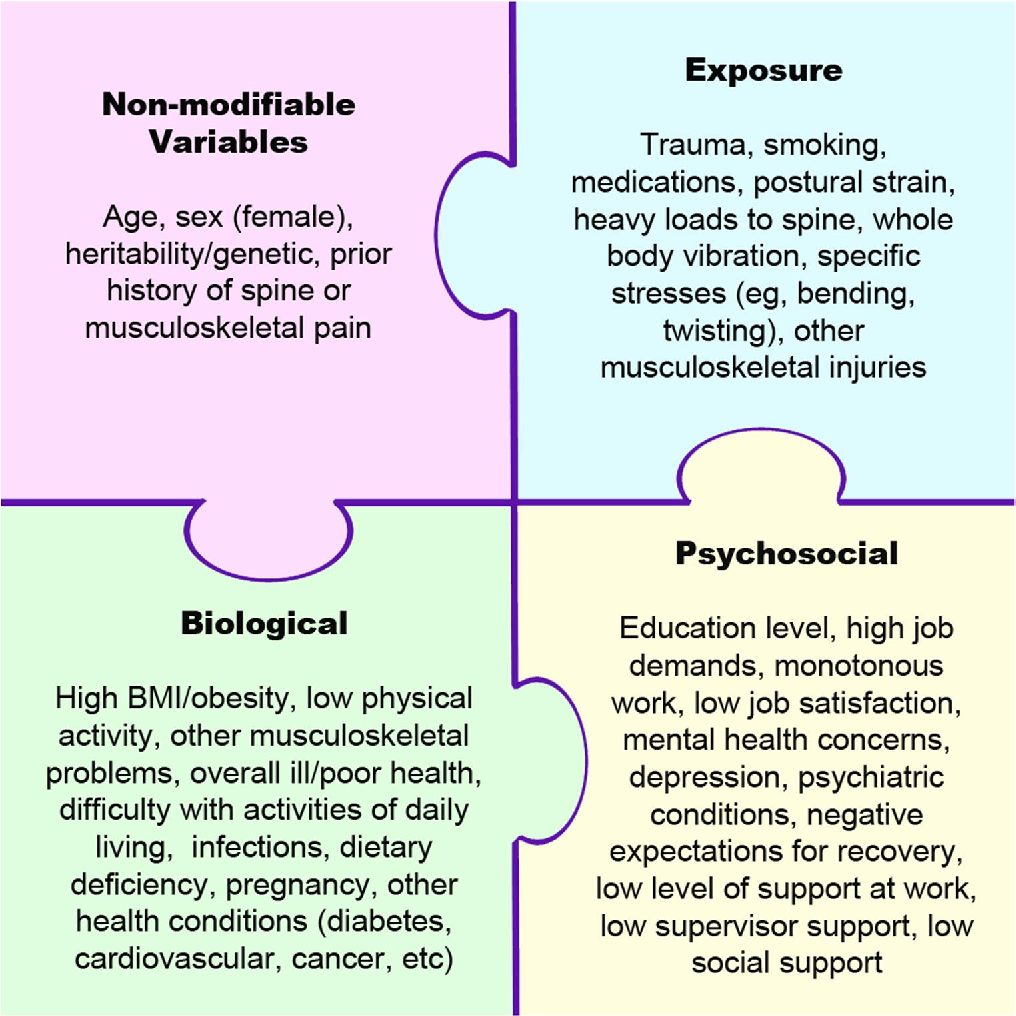The Global Spine Care Initiative:
Resources to Implement a Spine Care Program
SOURCE: European Spine Journal 2018 (Sep)
| OPEN ACCESS |
Deborah Kopansky-Giles, Claire D. Johnson, Scott Haldeman, Roger Chou, Pierre Côté, Bart N. Green, et al.
Department of Research,
Canadian Memorial Chiropractic College,
Toronto, ON, Canada.
PURPOSE: The purpose of this report is to describe the development of a list of resources necessary to implement a model of care for the management of spine-related concerns anywhere in the world, but especially in underserved communities and low- and middle-income countries.
METHODS: Contents from the Global Spine Care Initiative (GSCI) Classification System and GSCI care pathway papers provided a foundation for the resources list. A seed document was developed that included resources for spine care that could be delivered in primary, secondary and tertiary settings, as well as resources needed
There are more articles like this @ our:
for self-care and community-based settings for a wide variety of spine concerns (e.g., back and neck pain, deformity, spine injury, neurological conditions, pathology and spinal diseases). An iterative expert consensus process was used using electronic surveys.
RESULTS: Thirty-five experts completed the process. An iterative consensus process was used through an electronic survey. A consensus was reached after two rounds. The checklist of resources included the following categories: healthcare provider knowledge and skills, materials and equipment, human resources, facilities and infrastructure. The list identifies resources needed to implement a spine care program in any community, which are based upon spine care needs.
CONCLUSION: To our knowledge, this is the first international and interprofessional attempt to develop a list of resources needed to deliver care in an evidence-based care pathway for the management of people presenting with spine-related concerns. This resource list needs to be field tested in a variety of communities with different resource capacities to verify its utility. These slides can be retrieved under Electronic Supplementary Material.
KEYWORDS: Delivery of health care; Health resources; Integrated; Primary health care
From the FULL TEXT Article:
Introduction
Clinical practice guidelines for neck, low back pain and other spine-related conditions may contribute to improving quality of care but have limited discussions about resource recommendations for specific interventions. Guidelines must describe the resources that are needed to provide spine care in any community where high-quality, resource-efficient health care is going to be implemented. This is especially important for communities that have limited resources, such as in low- and middle-income communities.
The importance of capacity assessment models and human resource distribution has been described by the World Health Organization and the United Nations Development Programme [1, 2]. However, these documents do not provide how to integrate specific health resources such as knowledge and skills, materials and equipment, human resources, facilities and infrastructure into their frameworks [1, 2]. There has been increased interest in addressing human health resources and infrastructure necessary to provide universal, general health care and for specific health conditions [3, 4]. However, to our knowledge, no comprehensive description of resource capacity required to deliver evidence-based care for spine-related disorders has been published.
The Global Spine Care Initiative (GSCI) has developed a model of spine care that is based on the GSCI classification system and care pathway, and foundational papers [5–18]. The GSCI model of care has been developed so that it could be implemented in different settings with variable levels of health and community resources. Before considering the implementation of a model of care in a community, however, it is essential to identify both available and required resources required to provide the recommended services. The objectives of this study were to develop a list of resources to implement a program to provide care for spine-related disorders at the community, primary, secondary and tertiary levels. The aim was to provide a list of resources that could be used in any location, but that could also be implemented in resource-poor settings such as underserved areas and low- and middle-income communities.
Read the rest of this Open Access article now!




Leave A Comment